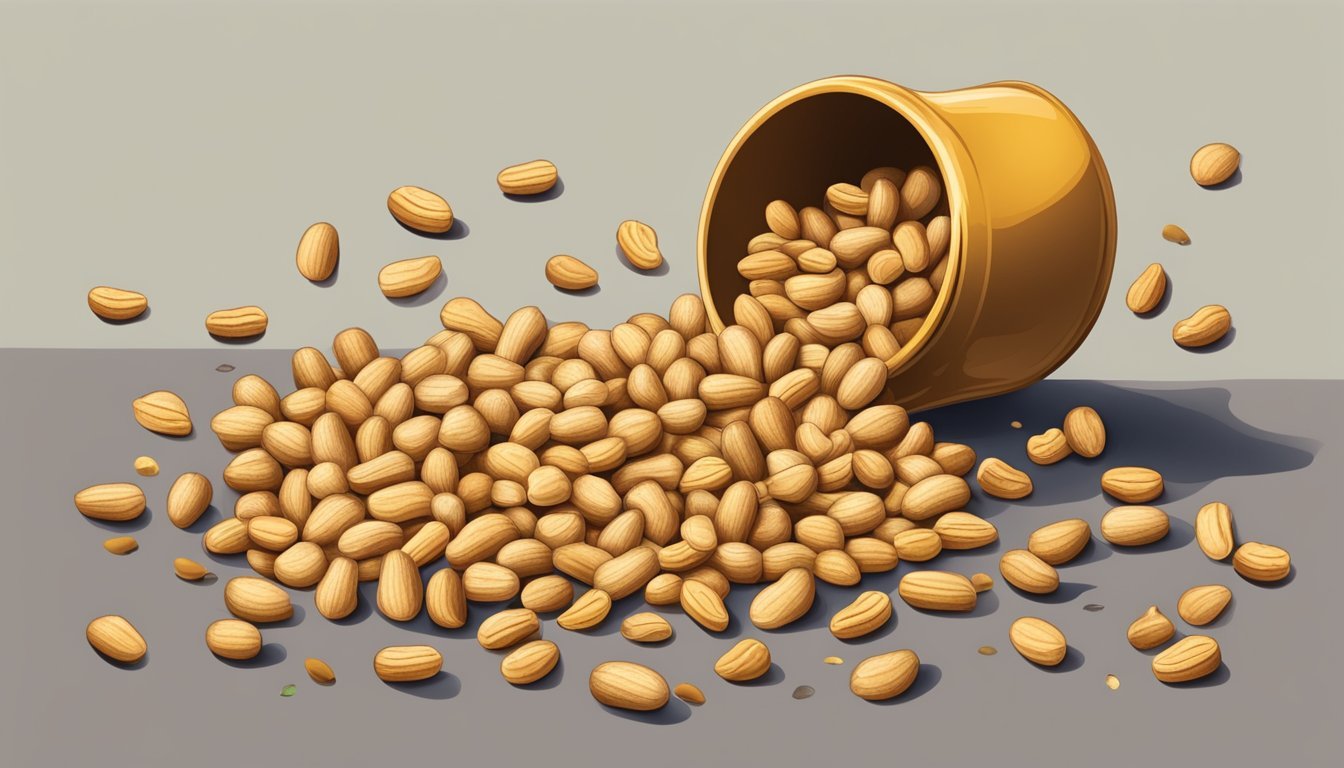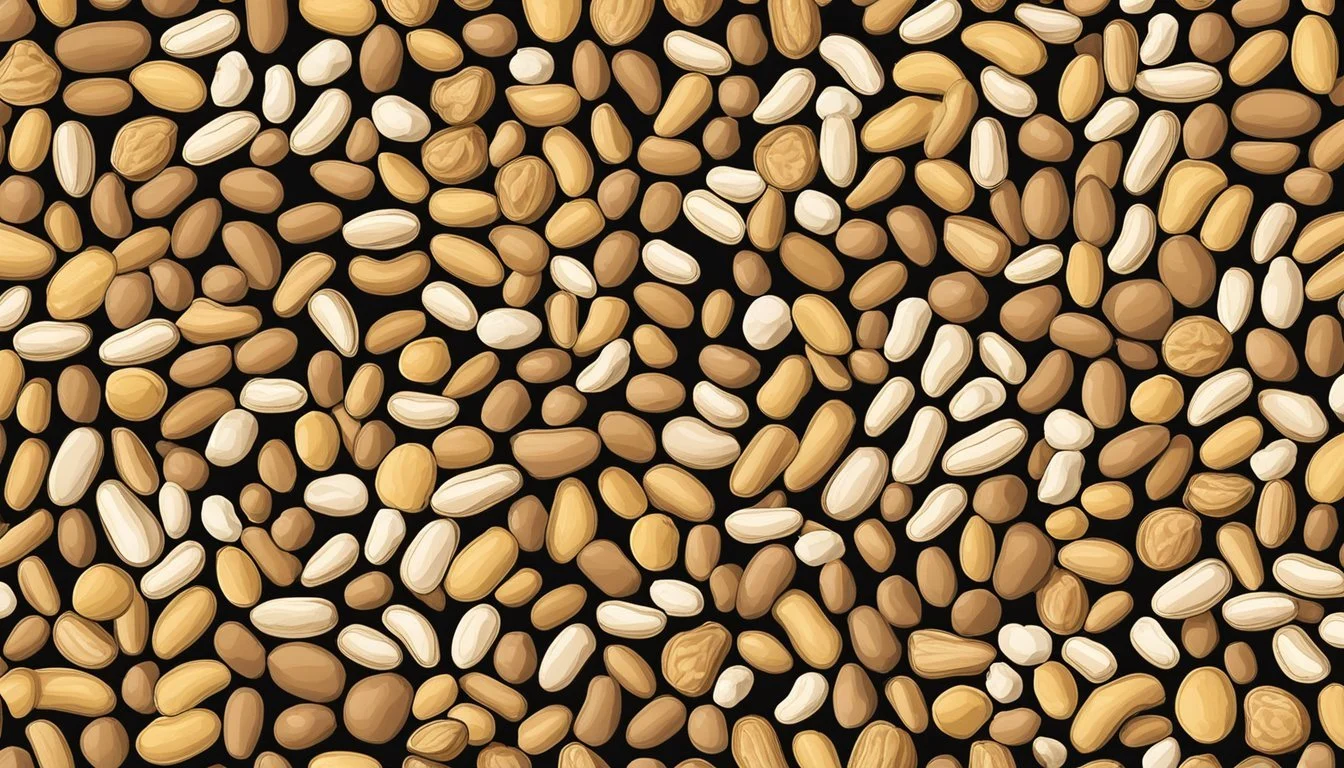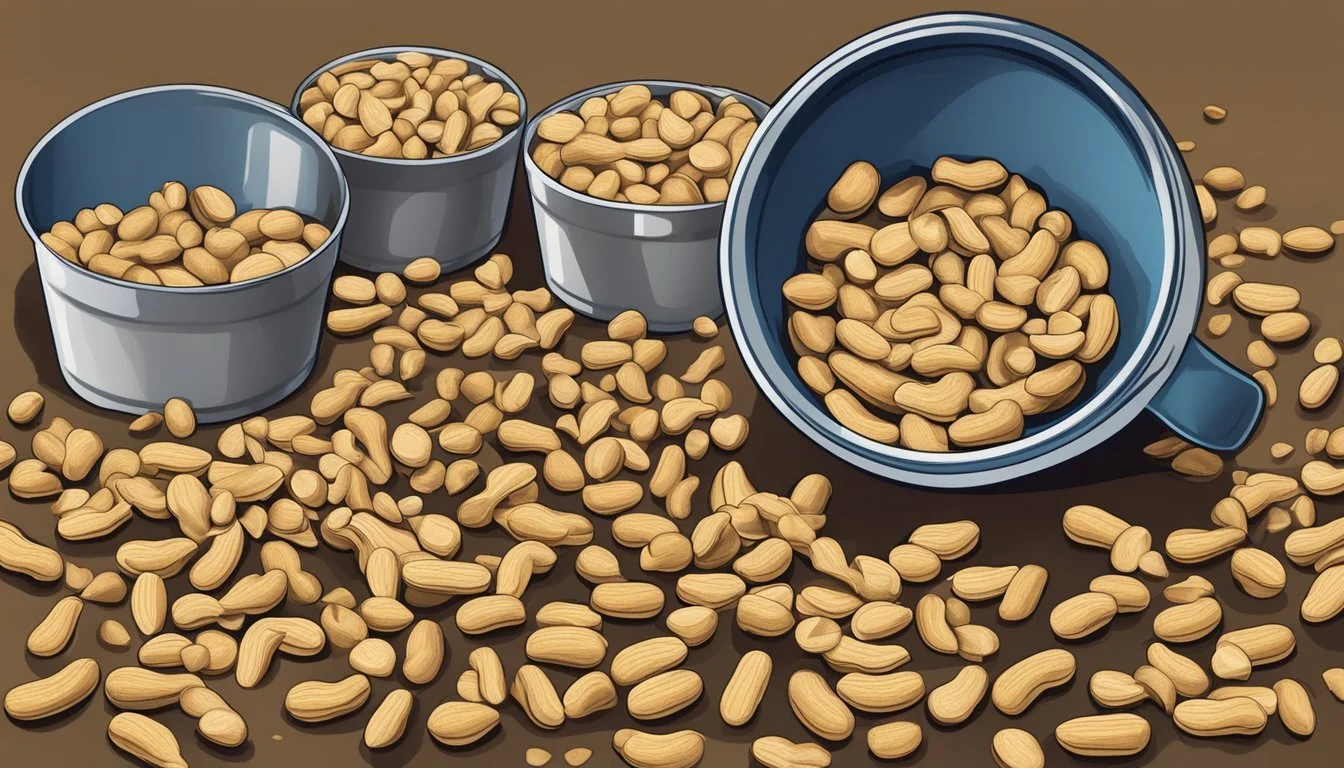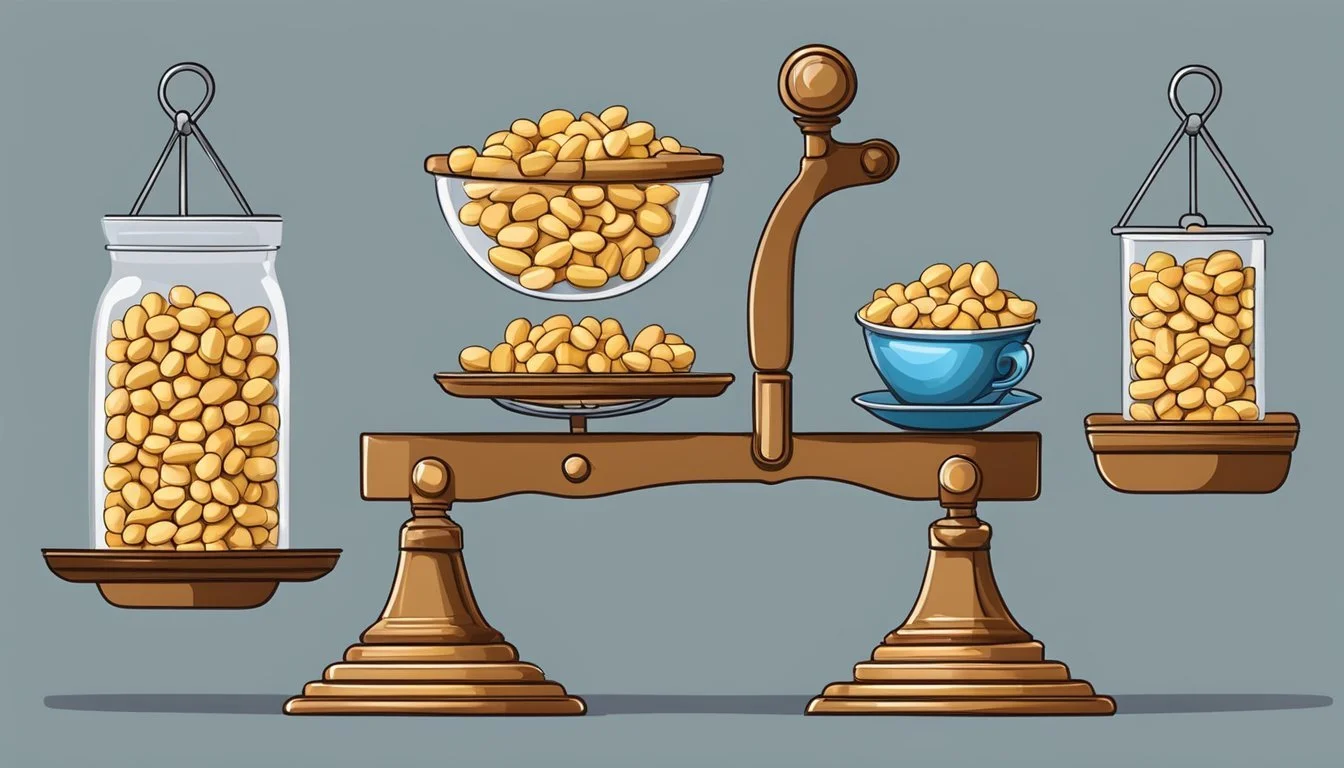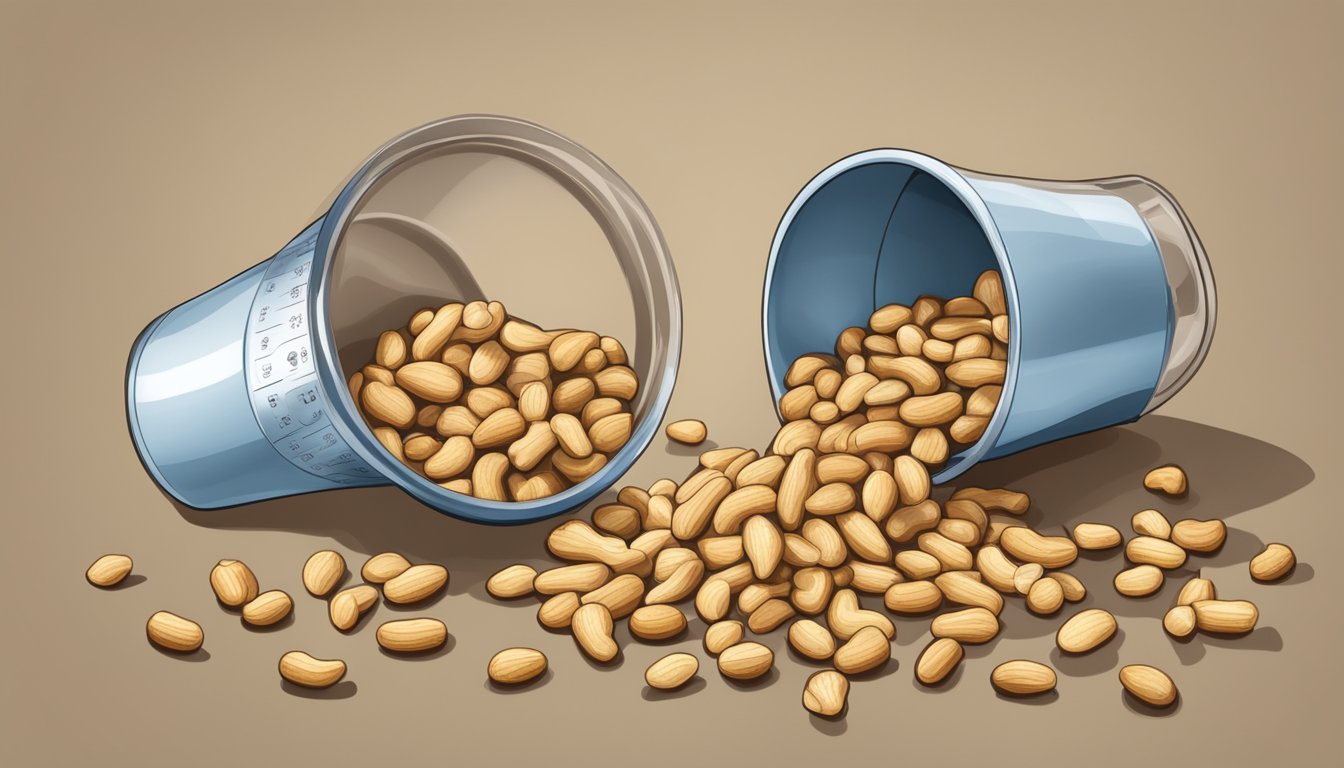How Many Cups in a Pound of Peanuts
Accurate Measurement Guide
Determining the conversion of cups to pounds when it comes to peanuts is essential for both cooking enthusiasts and professionals. Peanuts have a variable weight because their size and density can differ. However, a rule of thumb is that one cup of whole peanuts typically weighs around 0.5 pounds. Therefore, two cups would equal approximately one pound of peanuts.
This measurement can be influenced by factors such as the peanut variety, whether they are shelled or unshelled, and even the method of measurement. For precision in recipes or bulk purchases, understanding the cup to pound ratio is crucial. Since a cup is a unit of volume and a pound is a unit of weight, the type of peanut and its preparation need to be considered for accurate conversions.
Understanding Weights and Measures
Understanding the relationship between weight and volume is essential when converting cups to pounds, particularly for ingredients like peanuts. Precise conversions ensure accuracy in recipes and dietary plans.
Units of Weight
Weight is a measure of the heaviness of an object, typically expressed in units such as pounds (lb), ounces (oz), grams (g), and kilograms (kg). In the United States, pounds and ounces are commonly used, whereas the metric system uses grams and kilograms.
1 pound is equivalent to 16 ounces.
1 kilogram equals 1000 grams or approximately 2.20462 pounds.
1 ounce is about 28.35 grams.
These units are fundamental when measuring solid ingredients like peanuts.
Volume to Weight Conversion
Conversion between volume and weight involves translating a three-dimensional space, often measured in cups or milliliters, into a mass. For cooking, a measuring cup typically equates to 16 tablespoons or 240 milliliters.
Here is how these units roughly translate for peanuts:
Volume (Cups) Weight (Grams/approx.) Weight (Ounces/approx.) 1 146 5.2
A metric cup of whole peanuts weighs approximately 146 grams or 5.2 ounces. However, the actual weight can vary based on factors such as the size and density of the peanuts and the precision of measuring techniques. To convert cups to pounds for peanuts, one could use a formula based on the average weight of one cup of peanuts expressed in pounds. It's important for one to acknowledge that a cup of chopped, sliced, or ground peanuts might weigh differently than a cup of whole peanuts due to the change in volume caused by the air space between pieces.
Peanuts: Nutritional Value and Varieties
Peanuts offer robust nutritional value, and come in several types, each with its distinct characteristics in terms of taste, texture, and culinary uses.
Nutritional Content
Peanuts are a dense source of energy and nutrients. A cup of peanuts approximately contains:
Calories: 828
Water: 7%
Protein: 25.8 grams for 100 grams of peanuts
Carbohydrates: 16.1 grams per 100 grams of peanuts
Sugar: 4.7 grams per 100 grams of peanuts
Fiber: 8.5 grams per 100 grams of peanuts
Fat: 49.2 grams per 100 grams of peanuts
Saturated Fat: Present in smaller amounts
They are also rich in several essential nutrients, such as:
Niacin: 21% of Daily Value (DV) per ounce
Vitamin E: 16% DV per ounce
Manganese: 22% DV per ounce
Folate: 17% DV per ounce
Thiamin: 16% DV per ounce
It is notable that peanuts do not provide vitamin A or C. The nutritional composition can vary slightly based on whether peanuts are consumed raw, dry-roasted, or in other forms.
Peanut Types
Different types of peanuts include:
In Shell: These are whole peanuts that include the outer shell and are often roasted or boiled.
Shelled: These peanuts have been removed from their shells and are available raw, roasted, salted, or unsalted.
Edible Yield: Refers to the actual amount of peanut one can eat after removing the shell.
Roasting peanuts, whether dry-roasted or oil-roasted, can affect the flavor profile and sometimes the nutrient content:
Dry-Roasted: Peanuts roasted without oil, often seasoned with salt.
Oil-Roasted: Peanuts cooked in oil, which can slightly increase the fat content.
All types offer a high amount of protein and fat, making peanuts a filling snack or addition to meals. The nutritional content, flavor, and texture will vary depending on the type of peanut and preparation method.
The Conversion Process
When converting cups of peanuts to pounds, one must consider the density of peanuts and the volume they occupy. The process is not a simple one-size-fits-all due to the varying factors that affect the conversion ratio.
Factors Affecting Conversion
The conversion from cups to pounds of peanuts is influenced by several factors:
Peanut Size and Density: Larger peanuts take up more space with less packing potential, affecting the cup-to-pound ratio.
Measurement Technique: How the peanuts are scooped can alter the volume; loosely scooped vs. tightly packed cups can yield different weights.
Volume-to-Weight Difference: Peanuts' specific gravity means that their volume (cups) does not directly correlate to weight (pounds); thus, the concept of food density is integral to the conversion.
Variety of Peanuts: Different types of peanuts can have different densities and hence can affect the conversion rates slightly.
Conversion Steps
Follow these steps for an accurate conversion from cups of peanuts to pounds:
Measure the peanuts by volume to obtain the required number of cups.
Determine the average weight of one cup of peanuts (relying on data such as 146 grams or 5.2 ounces per cup for whole peanuts).
Use the conversion factor that 1 pound equals 453.6 grams or 16 ounces to calculate the pounds:
If one cup of peanuts weighs approximately 5.2 ounces, then divide by 16 to find the pounds per cup.
Multiply the pounds per cup by the total number of cups to find the total weight in pounds.
Example Table for Common Measures:
Cups of Peanuts Weight (Ounces) Weight (Pounds) 1 5.2 0.325 2 10.4 0.65 3 15.6 0.975
By taking into account these factors and following these steps, one can convert cups of peanuts to pounds with precision and confidence.
Cooking Measurements
When converting peanuts from cups to pounds or vice versa, the reader must consider the ingredient-specific density and the standard measurements used in recipes. Precise conversions ensure that a dish turns out as intended.
Comparing Different Ingredients
Different ingredients have varying densities, which means that one cup of one substance can weigh significantly different from one cup of another. For example, one cup of whole peanuts typically weighs around 146 grams or 5.2 ounces. However, one US cup of:
All-purpose Flour: About 120 grams
Granulated Sugar: About 200 grams
Butter: 227 grams (sticks of butter in a pound: 4)
Rice: Varies from 175 to 185 grams depending on type
In baking and cooking, using an incorrect weight for an ingredient like flour or sugar can substantially alter the final product.
Volume to Weight Conversions
Ingredient Volume (US Cups) Weight (Grams) Notes Peanuts 1 146 Whole peanuts; can vary slightly. Flour 1 120 Approximation for all-purpose flour. Sugar 1 200 Granulated sugar. Butter 1 227 Equivalent to two sticks of butter.
Measuring Instruments
The instruments used in cooking measuring—like cups, spoons, and scales—can influence the accuracy of measurements. In the US customary system, these are the standard conversions:
1 US cup equals 8 US fluid ounces.
1 US tablespoon equals 3 US teaspoons (about 14.8 milliliters).
1 US gallon contains 4 US quarts or 8 US pints or 16 US cups.
Moreover, for measuring smaller volumes, particularly in cooking and baking, the use of tablespoons, teaspoons, and their metric counterparts is common. Here, it's important to recognize the slight differences between these measurement units.
Volume Measurement Conversions
Volume Unit US Customary Metric US Teaspoon 1/6 US fluid ounce ~4.93 milliliters Metric Teaspoon ~1/5 US fluid ounce 5 milliliters US Tablespoon 1/2 US fluid ounce ~14.79 milliliters Metric Tablespoon ~1/2 US fluid ounce 15 milliliters US Cup 8 US fluid ounces ~236.59 milliliters US Quart 2 US pints ~946.35 milliliters US Gallon 128 US fluid ounces ~3785.41 milliliters
It's essential for the cook or baker to use the correct measuring instruments aligned with the recipe's indicated system to ensure that the ingredients are measured properly, whether dealing with volume or weight.
Applying the Knowledge
In cooking and recipe adjustments, understanding the conversion between weight and volume is crucial. A pound of peanuts roughly equates to 3.25 cups. When dealing with peanuts in culinary scenarios, one must be aware that weight as pounds (lb) and volume as cups can yield different quantities due to the peanuts' size and packing density.
Practical Examples
In practice, if a chef has a recipe that requires one pound of peanuts, they have to measure out about 3.25 cups. Conversely, for smaller servings, such as a half-pound of peanuts, the equivalent volume would be approximately 1.625 cups. These calculations assist in precise ingredient preparation and contribute to the success of the dish being made.
Conversion Table for Peanuts:
Weight (Pounds) Volume (Cups) 0.25 lb 0.8125 cups 0.5 lb 1.625 cups 1 lb 3.25 cups 1.5 lb 4.875 cups 2 lb 6.5 cups
Adjusting Recipes
When adjusting recipes, chefs may need to convert between grams and cups or ounces and cups. For peanuts, remember that 1 cup equates to approximately 146 grams or 5.1 ounces. These conversions are beneficial when modifying serving sizes or when kitchen tools for measuring weight are unavailable, ensuring that the recipe's balance and flavor profile are maintained. It allows for seamless scaling, whether the objective is to increase the portion size for a larger gathering or reduce it for a more intimate meal.
Resources and References
In exploring the conversion between cups and pounds of peanuts, robust resources such as food databases and online calculation tools are fundamental for acquiring precise information. These references offer standardized measures that facilitate accurate conversions.
Food Databases
Food databases provide detailed nutritional information and standard measurements for both generic and branded foods. The U.S. Department of Agriculture's (USDA) Agricultural Research Service hosts FoodData Central, which is an extensive database where one can find the weight of one cup of peanuts listed both for generic and branded products. FoodData Central offers:
Generic food measurements, giving an average that can be used when the brand is unspecified.
Branded food measurements, useful for specific products where weight may vary slightly due to added ingredients or packaging.
Calculation Tools
For those who require instant conversions, various online calculation tools can simplify the process. A reliable food calculations forum or dedicated culinary conversion website typically provides:
Pre-loaded conversion calculators, which automatically convert cups to pounds based on the input.
A range of ingredient options, including peanuts, that may have distinct densities and therefore require different conversion factors.
These tools often draw on data from USDA databases, ensuring the conversion factors employed are up-to-date and accurate.
Supplementary Information
In this section, we explore the weight-to-volume conversions for various substances, and address frequently asked questions along with common concerns associated with weighing and measuring peanuts and other materials.
Weight to Volume of Other Substances
When converting weight to volume, it's crucial to consider the density of the substance in question. Different substances have different densities, which means the weight-to-volume ratio can vary significantly from one material to another.
For instance, sugar and butter are two common kitchen substances that demonstrate this principle well. A cup of granulated sugar weighs approximately 200 grams, while a cup of butter weighs about 227 grams. The volume of a substance like pure water at 4°C (the temperature at which it is densest) is quite simple to convert: one metric cup of water has a mass of 250 grams and is equivalent to 1/4 of a liter, or 250 centimeter³ (cm³).
Moreover, in industries such as construction or landscaping, materials like gravels, oils, or CaribSea gravel have specific weight-to-volume conversions. These materials are often measured in larger units such as imperial gallons or inch³. The molar concentration of a substance like zinc in solution could also be relevant depending on the context, i.e., one mole per liter of solution.
FAQs and Common Concerns
Calories and Nutritional Information: Peanuts are frequently measured by those monitoring calorie intake. Calories in peanuts are largely affected by their fat and protein content. Generally, there are about 5.67 calories per gram of peanuts.
Price and Quantity for Events: For those hosting a party or event, understanding how much to purchase can hinge upon the number of guests and the desired portion size. The price may also be a consideration when determining the quantity to buy.
Cooking and Baking Measurements: Home cooks and professionals often need to convert weight to volume when following recipes. A metric cup of a given substance may be required, or sometimes a specific measurement in centimeters cubed.
Density and Measurement Conversion: Many recipes use volume measurements, but density plays a crucial role in converting to weight. This is especially true for baking, where precision is key.
Understanding the specific conversions for various substances and addressing common concerns are important for accuracy in both culinary and non-culinary contexts.

